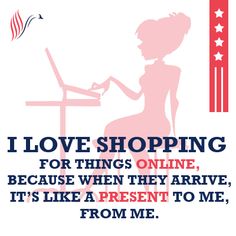Having been at the marketing helm during the transition of Women.com from a career women’s site to a mainstream portal for women of all ages and backgrounds, I learned a lot about attracting visitors, creating an audience, engaging segments by interest and developing and deepening online relationships.
Over the past decade, however, much has changed on the online front. The need for “portals” has declined significantly as consumers have become much more saavy about finding sites and content they need without a portal’s “one stop shopping” solution. As the world wide web has matured, online life has became more and more specialized. Search engines index deeper and differently. Content formats continue to evolve. Online ads morphed from static banner ads to dynamic video-based and interactive ads with better cookie and tag-based targeting. The blogosphere exploded to create experts in niche areas of content with a voice and a point of view and text gave way to visuals with images and now video telling stories more visually than ever before. Social media platforms created venues for online meetups leveraging existing consumer relationships and adding new ones drawn together by common threads of interests and passions. And mobile exploded to create hundreds of apps delivering a customized user experience centered around features and functions chosen by a consumer’s specific lifestyle, personality and online “always connected” needs.
So in a world of personalization, consumer control, customized user experiences and a fragmented media landscape, do online communities still have a value? And if so, how do you meet the new challenges of attracting an audience, successfully engaging members and building a thriving online community?
To the question of value, I would point to some current examples of communities which seem to have answered that question –definitively. Wikipedia. Facebook. Ebay. LinkedIn. Pinterest. Instagram. Trip Advisor. Reddit. Wanelo. Polyvore. Even Buzzfeed and YELP.
But what about attracting and then building a thriving community? Here are 10 best practices which we believe are requirements for creating successful online communities – in 2015.
- Define the “community” value proposition – from a member point-of-view. What are the mutual benefits members derive from joining, participating and staying members? How will you provide members with security/privacy, show your standards for transparency and trustworthiness as a “sponsor” of the community, provide the right level of features and functionality for sharing information across the community and make it easy for members to engage with each other? Try creating member personas. Who are you competing with for your audience members’ 10 minutes of downtime? This is the difference between a message board…and Pinterest. And a reminder. The broader your scope of value, the harder it will be to triumph over competing concepts. Smaller and narrower is often better when playing the community game.
- Be clear about your goals and how you spell S-U-C-C-E-S-S. While most of us might assume that revenue is driving most online communities, this isn’t always the case. Successful communities can also thrive around:
- Education (topic specific)
- Access to exclusive content and experts, tips, recommendations
- Entertainment
- Advocacy
- (and of course) Socializing
The important takeaway here is that you need to be crystal clear on your specific objectives for creating your online community and which metrics you will use to measure success from day one.
- Invite. How you decide to create the spark which becomes the community fire is critical to making sure you get the qualified audience you seek. No longer can you “build it and they will come”. They won’t. So get creative in our approach to “inviting”. Start with your A-List of influencers and early adopters. Seed some like networks where your audience hangs out. Give them a REALLY good reason to visit – then create a conversion point through a second “thanks for visiting” reward, for later. Use what works and always has. Word of mouth. Member to member. Social. Viral proof of concept. Avoid advertising.
- Delight. Then add the DELIGHT factor. Use your value proposition to showcase your uniqueness. Develop those features and functionality which wow them. Ask for their input. Give them a mission. Give them a voice. Keep feeding them “come and get it” content leveraging your partners and them. Give them exclusives. Time limit access to content and be timely based on what’s happening NOW. Provide multiple formats tuned to their preferences. Personalize it. It all works.
- Recognize and Reward. Your members are your celebrities, so treat them that way. Recognize their talents, their experience, their generosity, their enterprising spirits. Make them STARS. Respond to them IMMEDIATELY. Ask questions, answer questions. Thank them. Proactively ask for their help before you need it. Reward them with rewards they actually value. Share their ideas, creativity, tips and advice. Give the verb “retweet” broad application.
Building online communities is not for everyone. But if you are a natural connector, a networker, entrepreneurial and a good listener, you will love it. If you’re thinking of building one, get in touch. We’d love to help!

